As we enter 2018, we find a variety of products arriving to market that support 8K imagery. The 2020 Olympics are slated to be broadcast in 8K, and clearly we have a way to go, but innovations are constantly being released that get us closer to making that a reality. The first question that comes up when examining 8K video equipment is: why 8K? Obviously it is more resolution, but that is more of an answer to the how question than the why question. Many people will be using 8K imagery to create projects that are finished at 4K, giving them the benefits of oversampling or re-framing options. Others will use the full 8K resolution on high DPI displays. There is also the separate application of 8K images in 360 video for viewing in VR headsets. Similar technology may allow reduced resolution extraction on the fly to track an object or person in a dedicated 1080p window from an 8K master shot, whether that is a race car or a basketball player. The benefit compared to tracking them with the camera is that these extractions could be generated for multiple objects simultaneously, allowing viewers to select their preferred perspective on the fly. So there are lots of uses for 8K imagery. Shooting 8K for finishing in 4K is not much different from a workflow perspective than shooting 5K or 6K, so we will focus on workflows and tools that actually result in an 8K finished product.
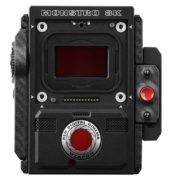
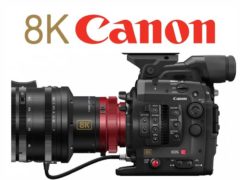 The first thing you need for 8K video production is an 8K camera. There are a couple of options, the most popular ones being from Red. The Weapon 8K came out in 2016, followed by the smaller sensor Helium8K, and the recently announced Monstro8K. Panavision has the DXL, which by my understanding is really a derivation of the the Red Dragon8K Sensor. Canon has been demoing an 8K camera for two years now, with no released product that I am aware of. Sony announced the 8K 3-Chip camera UHC-8300 at IBC 2017, but that is probably out of most people’s price range. Those are the only major options I am currently aware of, and the Helium8K is the only one I have been able to shoot with and edit footage from.
The first thing you need for 8K video production is an 8K camera. There are a couple of options, the most popular ones being from Red. The Weapon 8K came out in 2016, followed by the smaller sensor Helium8K, and the recently announced Monstro8K. Panavision has the DXL, which by my understanding is really a derivation of the the Red Dragon8K Sensor. Canon has been demoing an 8K camera for two years now, with no released product that I am aware of. Sony announced the 8K 3-Chip camera UHC-8300 at IBC 2017, but that is probably out of most people’s price range. Those are the only major options I am currently aware of, and the Helium8K is the only one I have been able to shoot with and edit footage from.
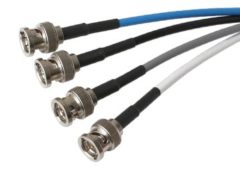
Moving 8K content around in real-time is a challenge. Displayport 1.3 supports 8K at 30p, with dual cables being used for 60p. HDMI 2.1 eventually allow devices to support 8K video on a single cable as well. Another approach is to use multiple parallel channels for 12G SDI, similar to how quad 3G SDI can be used to transmit 4K data. It is more likely that by the time most facilities are pushing around lots of real-time 8K content, they will have moved to Video IP, and be using compression to move 8K streams on 10GbE networks, or moving uncompressed 8K content on 40Gb or 100Gb networks.
The next step is the software part, which is in pretty good shape. Most high end applications are already set for 8K, because high resolutions are already used as back-plates and other unique uses, and because software is the easiest part to allow higher resolutions for. I have edited 8K files in Premiere Pro in a variety of flavors without issue. Both Avid and Resolve claim to support 8K content. Codec wise there are already lots of options for storing 8K, including DNxHR, Cineform, JPEG2000, and HEVC/H265 among many others.
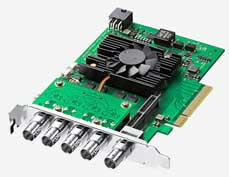 The hardware to process those files in realtime is a much greater challenge, but we are just seeing the release of Intel’s next generation of high end computing chips. The existing gear is just at the edge of functional at 8K, so I expect the new systems to make 8K editing and playback a reality at the upper end. Blackmagic has announced the Decklink 8K Pro, a PCIe card with quad 12G SDI ports. I suspect that AJA’s new IO4K Plus may support 8K at some point in the future, with quad bidirectional 12G SDI ports. Thunderbolt3 is the main bandwidth limitation there, but it should do 4:2:2 at 24p or 30p. I am unaware of any display that can take that yet, but I am sure they are coming.
The hardware to process those files in realtime is a much greater challenge, but we are just seeing the release of Intel’s next generation of high end computing chips. The existing gear is just at the edge of functional at 8K, so I expect the new systems to make 8K editing and playback a reality at the upper end. Blackmagic has announced the Decklink 8K Pro, a PCIe card with quad 12G SDI ports. I suspect that AJA’s new IO4K Plus may support 8K at some point in the future, with quad bidirectional 12G SDI ports. Thunderbolt3 is the main bandwidth limitation there, but it should do 4:2:2 at 24p or 30p. I am unaware of any display that can take that yet, but I am sure they are coming.
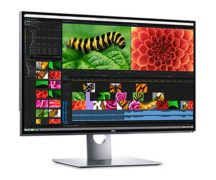 In regards to displays, the only one commercially available is Dell’s UP3218K monitor running on dual Displayport 1.4 cables. It looks amazing, but you won’t be able to hook it up to your 8K camera for live preview very easily. An adapter is a theoretical possibility, but I haven’t heard of any being developed. Most 8K assets are being recorded to be used in 4K projects, so the output and display at 8K aren’t as big of a deal. Most people will have their needs met with existing 4K options, with the 8K content giving them the option to re-frame their shot without losing resolution.
In regards to displays, the only one commercially available is Dell’s UP3218K monitor running on dual Displayport 1.4 cables. It looks amazing, but you won’t be able to hook it up to your 8K camera for live preview very easily. An adapter is a theoretical possibility, but I haven’t heard of any being developed. Most 8K assets are being recorded to be used in 4K projects, so the output and display at 8K aren’t as big of a deal. Most people will have their needs met with existing 4K options, with the 8K content giving them the option to re-frame their shot without losing resolution.
Displaying 8K content at 4K is a much simpler proposition with current technology. Many codecs allow for half res decode, which makes the playback requirements similar to 4K at full resolution. While my dual processor desktop workstation can playback most any intermediate codec at half resolution for 4K preview, my laptop seems like a better test-bed to evaluate the fractional resolution playback efficiency of various codecs at 8K, so that will be one of my next investigations.
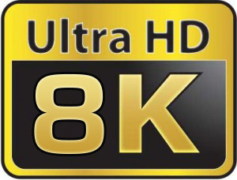 Assuming you want to show your content at the full 8K, how do you deliver it to your viewers? H.264 files are hard limited to 4K, but HEVC (or H.265) allows 8K files to be encoded and decoded at reasonable file sizes, and is hardware accelerated on the newest GPU cards. So 8K HEVC playback should be possible on shipping mid and high end computers, provided that you have a display to see it on. 8K options will continue to grow as TV makers push to set apart their top of the line models, and that will motivate development of the rest of the ecosystem to support them.
Assuming you want to show your content at the full 8K, how do you deliver it to your viewers? H.264 files are hard limited to 4K, but HEVC (or H.265) allows 8K files to be encoded and decoded at reasonable file sizes, and is hardware accelerated on the newest GPU cards. So 8K HEVC playback should be possible on shipping mid and high end computers, provided that you have a display to see it on. 8K options will continue to grow as TV makers push to set apart their top of the line models, and that will motivate development of the rest of the ecosystem to support them.

